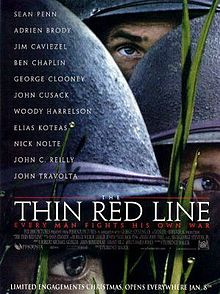
I mentioned this film in passing in a previous post, but I feel it is a movie that deserves its own discussion. For many, this is their favorite Stanley Kubrick movie. I have had problems with it in the past, but after a recent rewatching I have found that I am more impressed with it now than I was previously.
Since 2001 (1968), Stanley Kubrick has broken almost all of his movies up into several distinct sections. In A Clockwork Orange (1971) there is the beginning section with Alex as a delinquent, followed by his stint in prison, and concluded with his time after being released. I have never taken issue with the fragmented nature of Kubrick’s storytelling, finding each section to complement the other ones, and never having a significant drop in quality. Full Metal Jacket (1987) is the exception to this statement.
 The opening segment is phenomenal. It shows the process of a group going through marine bootcamp. Amongst the group is Pvt. Joker, who is the film’s main character-of sorts, and Pvt. Pyle, a fat, stupid layabout. Pvt. Pyle consistently makes mistakes and is unable to complete the physical demands imposed upon him by the strict drill instructor, who verbally and physically harrasses Pyle at every opportunity. After enduring months of abuse, Pyle finds his calling in riflery. The night before graduation, however, Pyle shoots the drill instructor with his rifle before shooting himself in the mouth. The film then cuts to Joker in Vietnam.
The opening segment is phenomenal. It shows the process of a group going through marine bootcamp. Amongst the group is Pvt. Joker, who is the film’s main character-of sorts, and Pvt. Pyle, a fat, stupid layabout. Pvt. Pyle consistently makes mistakes and is unable to complete the physical demands imposed upon him by the strict drill instructor, who verbally and physically harrasses Pyle at every opportunity. After enduring months of abuse, Pyle finds his calling in riflery. The night before graduation, however, Pyle shoots the drill instructor with his rifle before shooting himself in the mouth. The film then cuts to Joker in Vietnam.
After this, the film takes a nose dive. The opening is a brilliant exploration of the dehumanizing effects of bootcamp, while the rest of the film struggles to find what it is it wants to say. After numerous forgettable interactions, Joker and his unit attempt to kill a sniper who is slowly picking them off.
Before this, however, Kubrick flirts with different ideas. Joker is originally deployed to Vietnam as a photographer, which allows him to critique the media’s representation on the Vietnam war. However, Kubrick quickly drops this promising concept. This prevents Full Metal Jacket from reaching its full potential as a great movie.














